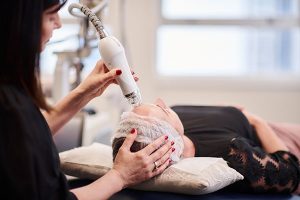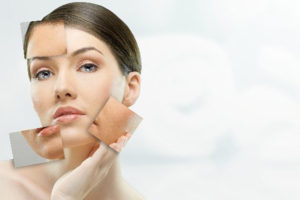Article at a glance
- Treatments like microdermabrasion, micro-needling, IPL, skin peels, and HIFU offer options to address skin issues.
- These procedures are preferred for their short duration, with long-lasting results.
Skin rejuvenation can get confusing, with so many options touted to turn back the clock most clients ask about the minimally invasive alternatives available first, and choose to start with these less intensive anti-aging procedures.
Non-invasive and minimally-invasive skin rejuvenation techniques are popular with the new “face” of anti-aging — younger adults who are looking to head off visible signs of aging.
There are procedures available that can address virtually any issue, from fine lines to deep wrinkles, dark spots, and scarring. They are designed to tighten, brighten, resurface, and/or renew the skin. In many cases, there are multiple procedures to choose from.
Chemical peels, microdermabrasion, and laser treatments that use heat or light work to refresh the skin’s surface, and in some cases, work below the surface to stimulate the production of new collagen.
The First Line of Defense, Non-Surgical Treatment options for Skin Rejuvenation:
1. Most people use some type of over-the-counter skin care products and SPF UV protection to protect and moisturize their skin. Many of these products contain ingredients such as hyaluronic acid and retinol, which help to plump the skin and thicken the epidermis reducing the appearance of fine lines and wrinkles. SPF UV protection is essential and the no.1 thing you can do to help slow skin damage and aging.
2. Micro-dermabrasion treatments use a mildly abrasive instrument to gently exfoliate your skin, removing the thicker, uneven outer dead skin layer resulting in a refreshed appearance. This type of skin rejuvenation is used to treat light scarring, discoloration, sun damage, and stretch marks, reduce or eliminate enlarged pores, and treat acne and the scars left by acne. Overall leaving you with a brighter and smoother skin with zero downtime and pain.
3. Micro-needling, the newest minimally-invasive procedure, uses a Dermapen with fine needles to put micro-channels into the skin without significantly damaging the epidermis. This careful injury to the skin stimulates skin repair and rejuvenation and increases collagen in the dermis.
Read More – Dermal fillers
4. IPL treatment can address a number of different skin issues including pigmentation/sunspots, broken capillaries/redness/vascular flushing, acne, and general skin rejuvenation. This treatment involves delivering light pulses at specific wavelengths targeting different depths into the skin. You will sense the flash of light and feel a sensation like a rubber band being snapped against the skin.
Read More – Intense Pulsed Light (IPL) Therapy
5. Skin peels treat myriad skin complaints, and it really depends on what you are looking for in terms of treatment and results, consultation will help identify the peel that will be right for you. Skin issues such as complexion problems, fine lines, and wrinkles, acne can be treated with a peel. Skin peels help brighten and smooth the skin texture and depending on the type of peel used can also be hydrating to the dermis.
6. HIFU – High Intensity Focused Ultrasound. Ulfit uses ultra-sound technology, and micro shots of ultrasound to contour and tighten specific areas on the face, neck, and body. Three different heads target different depths/layers of the skin and underlying tissue to tighten and stimulate collagen. Ulfit is a simple treatment with low downtime that rejuvenates and delivers visible results.
Read More – Ultraformer-High Intensity Focused Ultrasound (HIFU)
7. LED therapy uses light-emitting diodes of either Red, Infrared or Blue light energy into the skin to calm, soothe and aid in repair and rejuvenation of the skin. Blue light is specific for acne treatments.
Read More – LED light therapy
Why Non-invasive treatments are preferred than Invasive treatments?
Non-invasive and minimally-invasive procedures can be quite short – in some cases just 30-60 minutes. Some require little to no downtime for recovery.
These procedures may be very effective, depending on the patient, and with lesser invasive procedures multiple sessions may be required to achieve optimal results. Depending on the procedure, results can last for months to a year, at which time the procedure may be repeated.
While the benefits are clear, consulting with a qualified, experienced clinician is the best way to determine which skin rejuvenation procedure will be most effective for any individual patient.
What are the limitations of non-invasive treatments?
The main limitations of non-invasive facial rejuvenation treatments are their temporary effects. Also, these treatments are used to maintain skin and prevent loose skin and tissues. So, if at presentation, there is the development of jowls and loose skin in the cheek, jawline, and neck, surgery may be the most effective. In these instances, a face and neck lift may be required.
In summary non-invasive procedures are a great way to prevent the development of lax skin, improve moderate skin laxity, and hopefully prevent to need for surgery.







